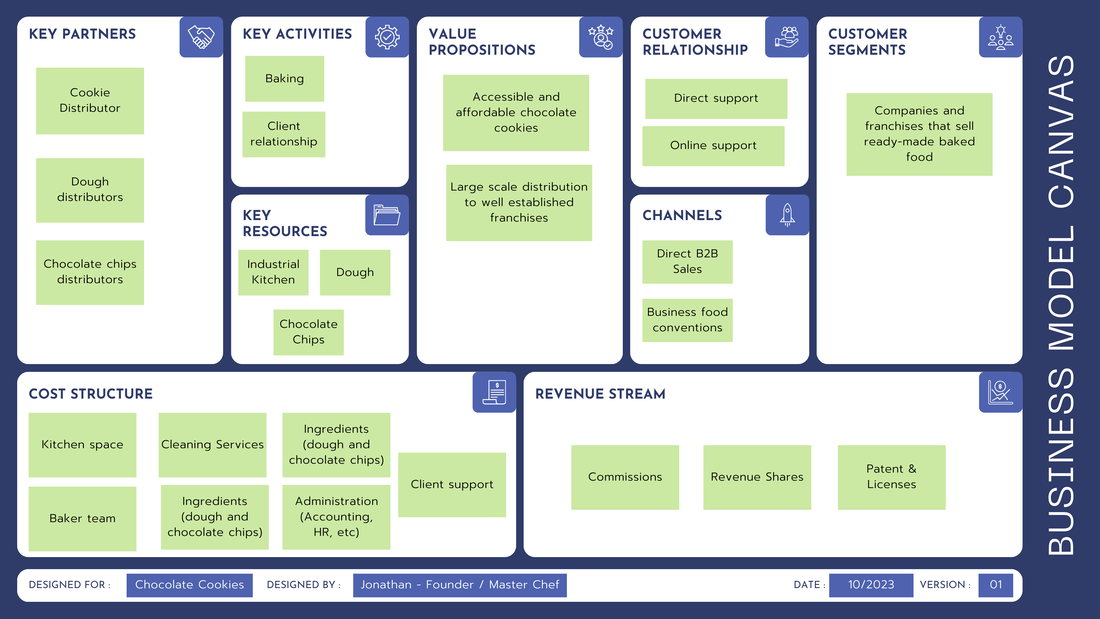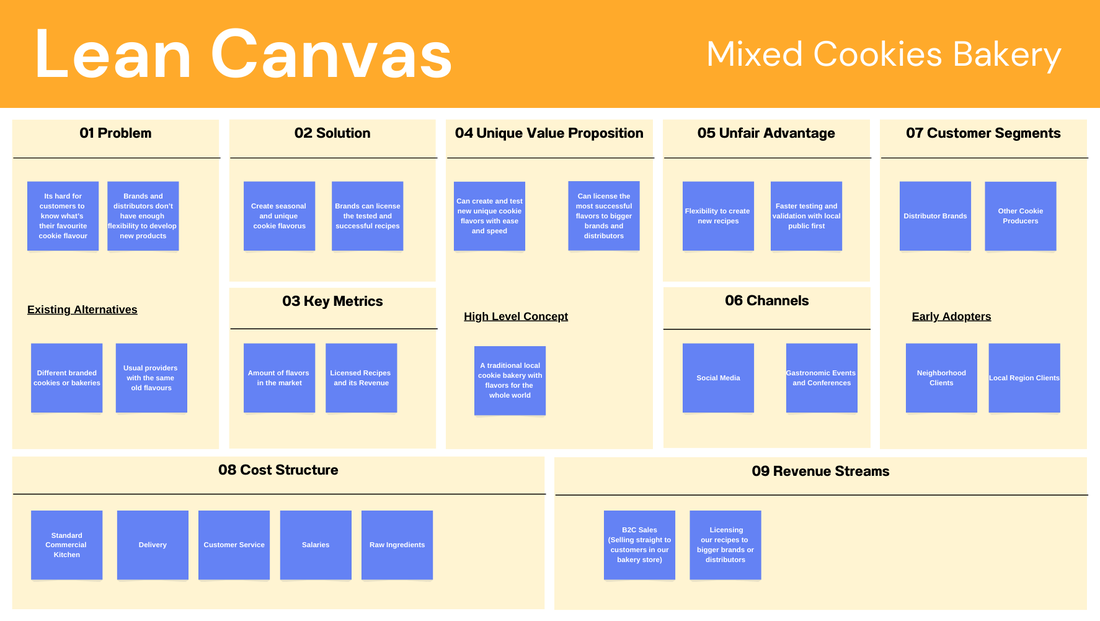Make sure you charge what you're worth!Defining the price of a service and a product is a recurrent question among freelancers and people starting their business, a natural step to understand how much you should charge to keep things running and providing for yourself or the people you're responsible for! Have you ever had any of the following questions? - How much should I price? - How much should I earn? - Should I charge per hour or per day? - Or should I just charge per month? - How much profit margin should I aim for? - What if the client ask for a discount, how much can I offer without losing money? - What expenses should I consider? - Can I work less than 8h a day, 25 days per month and don't go broke? If you're facing any of the questions above, I can help you out! Budgeting don't need to be complex, especially when we're talking about individual costs or small businesses. It's quite common that when budgeting we consider only our immediate expenses, but because of that it's also common to price only the bare minimum to survive. We need to provide you with enough money to be prepared for unexpected expenses, but most of all, to live life with quality when your business can provide you that! With that in mind, I've compiled over a decade of learnings in budgeting services, entrepreneurship and administration into a sensible spreadsheet that takes you through only 4 simple steps to identify your costs and determine you sales price. You can preview the spreadsheet here and download it through the button below: Hope this document helps you to define a proper cost for your services and an understanding of how much you cost, and most important of all, how much you deserve to earn and to spend with yourself!
What has business model definitions to do with management, one might wonder? Isn’t this blog supposed to be about making management good for people? Well, it has everything to do with it! One of the fundamental steps in any business is to know the purpose of it, regardless if you’re working with web development, aerospace design or baking bread. That gives a common goal and damage prevention to any reveries that can come from the people involved in a project, from the intern to the CEO, and at the same time it can give more flexibility to improve your product or services. Not to mention that having a shared goal while understanding the capabilities of the business can nurture camaraderie when done correctly. I’ve worked in places where innovative concepts were constantly created, but the business model was so rigid that embracing new products wasn’t possible and good opportunities were lost. And I have worked also in the opposite scenario, where the business model was so flexible that the company stuck only with creating experimental projects and also lost good business opportunities. But does that mean that both cases were a waste of time? Well, not necessarily, it depends on what each one wanted to achieve with their business model. Using metaphors is my “bad habit”, so here goes one for you, also using food as an example: Imagine that we have two companies, and both are bakery shops that sell cookies. The first one is more rigid one only sells chocolate cookies, while the second one is more flexible and invent new flavors of cookies constantly, never has a fixed menu. In both cases, if the administration and the workers are not properly aligned with the business model, that can lead to frustration of the team and even bankruptcy if they can’t adapt to their clients demands or even the market fluctuations like we saw in the 2020 pandemic. Knowing your business model gives you a goal to follow, and in the case of B2B companies, it’s important to also understand your client’s business model. But how to make this accessible? Traditionally defining a business model and even understanding it required extensive (and boring) documentation of every aspect of the business, which from the legal and bureaucratic side can be useful, especially to behemoths of the corporate world. But what about the people? How do we translate all of these perceptions into an easy way for anyone to understand your business and contribute to its development? That’s where my favorite approach to start any business or project comes in: making a simple Business Model Canvas of it, in particular the Lean Canvas Model. Through it you can have a clear and accessible definition of the business that helps your company, your project, your client and, most importantly, your people. So let’s break them down a bit with a couple of examples: Business Model CanvasFor this and the following example I have used the free tools at the Canva.com website, where you can find different boards and visual communication templates, including the Business Model Canvas and the Lean Canvas. Both formats are valid and easy to use, I'll start with the Business Model Canvas since it’s the more traditional way of visualizing or defining a business model with speed. I had my first contact with the Business Model Canvas back in Brazil when doing a series of entrepreneurship and administration trainings. Over the years, I’ve used the template for dozens of times to define the main scope of a project and to realign the business model of where I worked, helping to shift back the focus on priority solutions.  Click to enlarge the image Click to enlarge the image For a demonstration, I’ve used the following template from the Canva.com to create a resume of the Chocolate Cookies bakery. Each field is a significant aspect that, when combined, creates an understandable and fast visualization of the fundamental pieces of the business. It’s ideal for briefing and pitching a business to anyone, can be your team, an investor or even yourself. The model presents to us that the Chocolate Cookies bakery business is focused more on creating a single flavor of cookie, but distributing it on a large scale to different brands. This means that the business model is more focused on a Business to Business (B2B) approach instead of selling directly to the final customers (B2C). A manager knowing this information should then focus on refining the existing model, facilitating the delivery conditions and also improving the product quality, fortifying the brand position in the market. Lean Canvas For the next example, we’re gonna cover the Lean Canvas, a modern approach that focuses on the problems that the business aims to solve instead of its overall structure. I’ll be using the following model from the Canva.com. I particularly find this model more appropriate for cases where the business is not so clear or even established, defining its intentions first and only later thinking about the overall structure or needs. I’ve now based the following Lean Canvas on the second example of the Mixed Cookies Bakery, which sells different flavors of cookies and seemed to be more “lost” with the business focus since it kept reinventing its menu. What is defined in this Lean Canvas above is that the main business approach of the Mixed Cookies Bakery is creating new cookie flavors, testing them out with their local public and, if successful, licensing the recipes to bigger brands or distributors. You can also notice that the bakery isn’t aiming for industrial scale production, quite the contrary, they want to be the right size too keep their welcoming and warm approach to the consumers, but structured enough to test and validate new products to license. The variety of cookies can attend both the customers but also the companies through licensing. So, in summary, the core is supporting a strong B2C business with their local and loyal public and only then attending the B2B field, by establishing a good infrastructure to support the requirements of licensing to bigger brands. All of this was identified in 15min through the Lean Canvas, and you can do it to for yours or any business out there. Important considerationsIf you read this far, you have my appreciation. To conclude the post, here’s a few comments I want to reinforce:
I'll cover a more in-depth approach about documentation and communication in the next posts, telling more about the briefing and organization process of a new project.
Until we meet again! About the seriesThis series of posts came to me as an idea of highlighting personal experiences and solutions of managing and being managed, focusing on a humanized approach to deliver good results and consequently a better society by countering the imposed disposability of human workforce. I have had all kinds of professional experiences for the past 11 years, from working on a multi-billion company branch with a lot of established rules and structures, to having my own small business and later helping another one grow. Those experiences made me go through different roles in different environments, from the frontlines of development to the management of teams with +50 people in a total of more than 180 projects. So, through many successes and failures, I’ll share my view on what makes a good management, how people can be nurtured to become an A-Team, and how we can make work be worth our time in our brief existence. Getting Started!You just got assigned to a project and, even if you were the one to make the deal with a client, you might not have all the answers to make it happen yet. Many questions might come to mind, after all, what is the project about? Who is the client? How do I assemble the team? Should we have a meeting with 20 people to brief everyone? What if somebody new joins? What if somebody leaves? The list of questions can become quite long and eventually meaningless. That’s why I prefer to break down a project in small, but significant bites of information. (I’m writing this while hungry, so cope with me in this next example, it’ll make sense). Let’s imagine you’re about to eat a burger and have a notion of what its ingredients are, but it’s only after you start nibbling on it that you start to break down and identify the different flavors and textures, and only through that a full understanding of the burger comes to mind. And I mean literally! Especially if it's a unique good or bad flavor, it is now impressed in your brain and helps you to differentiate burgers and even different franchises! It’s the same with a project, even though they might not be as tasty, you first start with an overview of what they are or might be, but only after going through its essential components that you understand what makes it unique and how to prepare it. For example, one can see a videogame project as just another game. But what kind of game is that? Is it for mobile or desktop? Who is the player base? What is the genre of the game? And just like the burger, after you know at least what kind of bread and patty, what sauce, what cheese and what vegetables, you have an understanding to either go through or prepare the burger. I like to think of each main ingredient as a Lexia, opening up a branched understanding of the main subject, and it’s through them that you can delve even deeper to know how the tomato is grown, who made the bread, what is the sauce's secret ingredients and so on. The thing is that this more complex information will be necessary only later on, knowing the fundamental details are the first step to getting started.
With all this in mind, I’ll be breaking down in the next post of this series what is necessary to kickstart a project by knowing your business, understanding a purpose of the project and how to efficiently communicate with your team, your client and, most importantly, yourself. Until next time! |
AuthorWith over 11 years of experience pioneering and managing XR projects, Jonathan has specialized into the management of creative teams and planning projects for B2B, arts, heritage and marketing. ArchivesCategories |




















